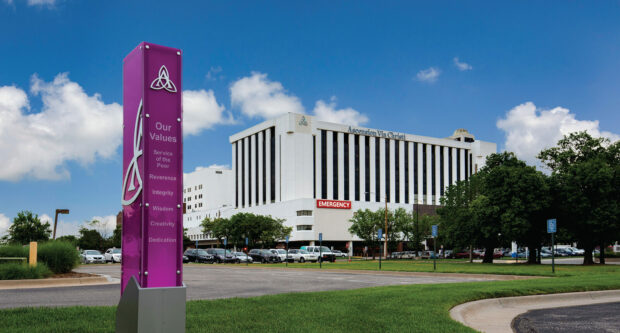HOME | ABOUT US | MEDIA KIT | CONTACT US | INQUIRE
HOME | ABOUT US | MEDIA KIT | CONTACT US | INQUIRE
Three major markets dominate, BUT RURAL AREAS FIND QUALITY CARE AT THE READY.

From Kansas City in the northeast to Topeka and southwest to Wichita, Kansas is served by an axis of top-tier health-care delivery systems that put the vast majority of the state’s 2.9 million residents less than an hour from a major medical center.
Because of its position as a regional center for medical services and the presence of a large research university, the Kansas City region is a major health-care center for the area. With numerous additional institutions just across the state line in Missouri, the medical needs of more than 1 million Kansans in that metropolitan area are well-served.
That starts with The University of Kansas Health System, the biggest single acute-care hospital in the Kansas City market, with 969 licensed beds; the main medical center admits nearly twice as many patients each year as the second-busiest hospital in the region. It’s also home to the University of Kansas Cancer Center, which last year achieved Comprehensive Cancer Center designation from the National Institutes of Health, one of just 53 nationwide.
The health system also has a presence in Topeka with its St. Francis campus, having acquired the 378-bed hospital in 2017 in a partnership with Ardent Health. It provides comprehensive cancer, cardiology, orthopedic, diabetes, surgical, and rehabilitation services for inpatients and outpatients, as well as other programs to meet the health care needs of northeast Kansans.
In Johnson County, major growth is visible at almost every medical facility, including AdventHealth’s Shawnee Mission Medical Center and HCA Midwest Health’s Menorah Medical Center. Both have undergone major expansions in recent years.
Saint Luke’s South, home to the Goppert Center for Breast Care, recently put the finishing touches on a five-year, $43 million expansion plan that included a new women’s health unit.
Olathe Medical Center, which recently was merged into The University of Kansas Health System, is one of the largest hospital campuses in the county and is home to the Kansas Cardiovascular Center, The Birth Place and Women’s Health Center, the Kansas Joint Specialty Center, and the Olathe Regional Oncology Center.
Overland Park Regional Medical Center, Menorah’s sister ship in the HCA fleet, represents a fourth major medical-center presence in the county.
In south-central Kansas, Wichita dominates in the delivery of health-care services, drawing patients from throughout the central and western portions of the state, nearby northern Oklahoma, and beyond. The market there revolves around two major players: Via Christi Health System and Wesley Medical Center.
Via Christi, with more facilities, is the bigger of the two; it boasts a combined 1,250 acute-care beds. Wesley, owned by Nashville-based health-care giant HCA Inc., boasts 760 beds and 102 bassinets—more than 6,000 children take their first breath in Wesley’s neonatal ward every year. And the sprawling Robert J. Dole VA Regional Medical Center treats veterans from a large region between the markets of Kansas City and Oklahoma City.
Roughly 1,000 physicians practice in Wichita and the surrounding area, providing core care in the areas of family practice, internal medicine, obstetrics, pediatrics, and psychiatry. In addition, the county has a strong medical society, with an estimated 90 percent membership rate with the resident physician population.
Southern Kansas, as well, benefits from the presence of a branch campus of the University of Kansas Medical School, which recently extended its course offerings to include four-year programs.
Topeka is a major medical center for northeast Kansas, with two general and five specialized hospitals employing more than 6,500 people. There, Stormont-Vail HealthCare comprises a 586-bed major regional medical center and a 150-member primary and specialty physician clinic in the Cotton O’Neil Division. The system serves the region through its network of more than 20 care facilities and the Cotton O’Neil Cancer Center.
Throughout the state, virtually each of the 102 other counties is served by a local hospital, with urgent-care clinics and rural physicians to help meet the less-than-acute-care needs of residents there.